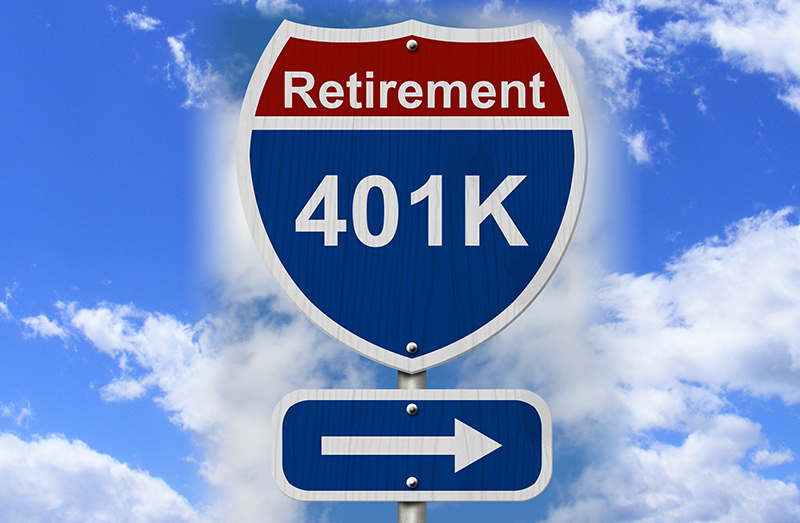401(k) accounts have become one of the most popular savings plans for employees looking to save for their retirement. Of the $26.6 trillion in retirement assets held by Americans, $5.1 trillion are held in 401(k) accounts. Even though only about 14% of employers are estimated to offer a 401(k) plan, 79% of Americans work for an employer that offers such plans.
Still, only 41% of those eligible to invest in 401(k) plans take advantage of them, meaning that only 32% of Americans actually have 401(k) accounts. The tax-advantaged status of 401(k) accounts and their ability to more or less make saving automatic have helped many Americans save for retirement. But if you’re one of the millions of Americans who doesn’t have access to a 401(k) account, or you don’t want to participate in your employer’s 401(k) program, there are many other ways to save for retirement.
Solo 401(k)
Those who are self-employed, or who have any self-employment income such as a consulting gig in addition to their full-time job, are eligible to set up a solo 401(k) plan for themselves. Those solo 401(k) plans can be either brokerage-based or self-directed, with the self-directed 401(k) offering more investment options, such as real estate, precious metals, etc. And because the individual is also considered the employer, the contribution limits to a solo 401(k) are much higher than for a traditional 401(k).
Your contributions as an employee are capped at the normal levels ($18,500 in 2018), but you can contribute additional funds as your own employer, up to a total of $55,000 for 2018. That’s far in excess of what most employer matching contributions for traditional 401(k) plans would contribute.
SEP-IRA
Self-employed IRAs are another option for the self-employed. The full name is Simplified Employee Pension (SEP) IRA, and the paperwork required to set them up is much less complicated than for a 401(k). Investment options are typically much broader than in most 401(k) plans and, just like the solo 401(k), the maximum contribution limit for 2018 is $55,000.
Brokerage Account
If you don’t have self-employment income, setting up a traditional brokerage account could be one of your best options. The number of choices you have could be overwhelming, as there are dozens of brokers vying for your business. The downside to this option is that unlike contributions to 401(k)s and IRAs, contributions to a brokerage account aren’t tax-deductible. And, unlike traditional 401(k)s and IRAs, the earnings you make from your brokerage account are taxable each year, meaning that you’ll have to calculate the capital gains tax you owe from the dividends or share distributions you receive.
Most retirement experts will recommend that you max out your contributions to any tax-advantaged retirement accounts first before you start putting money away into a brokerage account. You’ll also want to shop around to find a brokerage that charges low fees or look into investing in a no-load fund.
IRA: Traditional, Roth, and Self-Directed
Again, if you’re not self-employed you won’t be eligible for some of the above options but you can still set up an IRA account. That could be a traditional IRA with a financial institution or a self-directed IRA. IRAs are most often set up as a traditional tax-deferred IRA, in which you are able to contribute up to $5,500 in tax-deductible contributions per year. The earnings you gain from a traditional IRA aren’t taxed until you withdraw them after you retire, or are required to take distributions once you reach age 70 1/2.
You could also set up a Roth IRA, which has the same contribution limits as a traditional IRA but which uses after-tax dollars instead. You don’t get a tax deduction for Roth IRA contributions, but your earnings in a Roth IRA account aren’t taxed at all, even after you take the distributions in retirement. Roth IRA accounts are particularly recommended for those who expect to be in a higher tax bracket at retirement than they currently are in right now. If you’re currently in the 25% tax bracket but expect to be in the 39.6% bracket when you retire, then your contributions to a traditional IRA aren’t taxed today but will be taxed at 39.6% in the future, whereas your contributions to a Roth IRA would be taxed at 25% today but wouldn’t be taxed in the future.
Finally, there’s the option of the self-directed IRA, which offers investors the most options of any retirement account. While they’re also subject to the same contribution limits as other IRAs, their initial funding source can be a rollover from an existing 401(k) account or other similar retirement account. Gold IRAs are an example of a self-directed IRA, allowing investors to benefit from the wealth-protecting properties of gold, while still enjoying the tax advantages of a traditional IRA account.
So if you’re self-employed, working part-time, or a member of the “gig economy,” not having access to a 401(k) plan doesn’t mean that you won’t be able to save for retirement. Your options are many and varied, and growing every day. It will take a little more initiative and research on your part to figure out just what your best options are, but you’ll be rewarded by an investment that matches your needs and grows your retirement nest egg.
This article was originally posted on Goldco.





